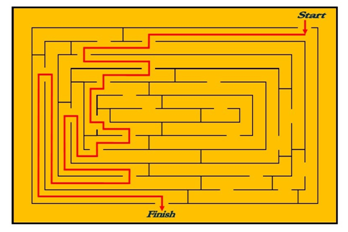Manageria
» July 2025
» Jan 2025
» July 2024
» Jan 2024
» July 2023
» Jan 2023
» Oct 2022
» July 2022
» Apr 2022
» Jan 2022
» Oct 2021
» July 2021
» Apr 2021
» Jan 2021
» Oct 2020


Add To What You Know (1)
Prepared by: "Optimanage.com" Team
On Theories of Leadership
Over the years, there have been four (4) approaches presented to study and understand leadership:- A genetic derivation of leadership
- A trait theory of leadership
- A behavioral explanation of leadership
- A situational (contingency) theories of leadership
The Managerial Grid
A management method used to categorize leadership styles of managers. It was developed by Dr. Blake and Dr. Mouton. This method made use of the University of Michigan dimensions of leadership. The method was described by a two (2) dimensional matrix. The dimensions of the matrix were: Employee Orientation and Task Orientation.Management Control Function
- Input Controls (Steering Controls): Corrective Actions taking place in the input phase of an organization’s activities.
- Process Controls: Control actions that affects an organization’s internal activities. These control actions are used to regulate and evaluate transformation activities.
- Output Controls: Management actions to regulate the output of goods or services (or both) of an organization.
- Feedback: Information collected to be used in a corrective manner in the organization. This information is about job and/or organizational performance from the work of the organization itself.
- Financial Controls:
These controls include the following:- Stating formally the financial objectives of the organization.
- Setting the financial parameters within which the organization will operate.
- Setting a defined period of time during which the financial parameters will be used.
- Setting the conditions assumed to exist during that time.
- Setting the performance standards to be used to judge the financial performance.
Organizational Change Management
- Organizational Development:
It is the concept of changing the organization’s behavior; in part or in its entirety. The change will be:- • In the structure of the organization
- • In the way the employees work
- • In the technology used
- Resistance to Change:
- It is the force that will limit the amount of change that can occur. This resistance to change will come from individuals or groups within an organization.
- Organizational Climate:
- It is the overall economic and social environment of an organizational entity. This environment can include; external forces, perceived needs and power structure.
- Change Processes:
- It is the ways changes can be accomplished. Depending on the philosophy of the organization and the nature of the change; the change can be imposed from above or it can be participative.
Conflict, described
Conflict is situation where there exists a disagreement within the organization on how to achieve its goals. The disagreement will be between two or more; people, groups, parties or positions.Managing Production and Operations
- Linear Programming (LP): It is a technique used in production and operations management to determine the optimal allocation of resources to alternative product choices. It finds the most profitable or the least costly path to reach the organizational goals.
- Economic Order Quantity (EOQ) Model: This model minimizes inventory costs. It relates Carrying Costs of Inventory, Ordering Costs and Usage to determine the most economical size of an Inventory Order.
Managing Time
References:
(1) Patrick J. Montana and Bruce H. Charnov, “Management”, Business Review Books, Third Edition, Baron’s (2000).





